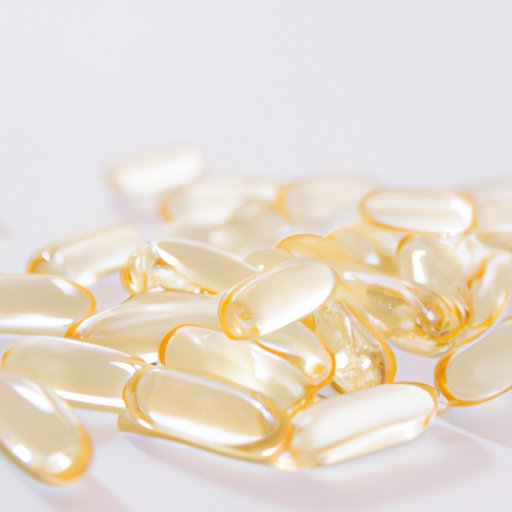
What Vitamin from the Sun: Understanding the Benefits of Vitamin D
Have you ever heard of the “sunshine vitamin”? Vitamin D is a vital nutrient that our bodies require to function properly, and it is produced in our skin when we are exposed to sunlight. In this article, we will explore the myriad benefits of Vitamin D, why the sun is the best source of this nutrient, and how to ensure that you are getting enough Vitamin D to keep your body healthy.
Exploring the Benefits of Vitamin D: Why the Sun is the Best Source
Vitamin D is essential for strong bones, healthy teeth, and proper immune system function. It also plays a role in preventing chronic diseases such as heart disease, cancer, and diabetes. So why is the sun the best source of Vitamin D?
When you expose your skin to sunlight, the ultraviolet B (UVB) rays interact with a form of cholesterol in your skin cells, producing Vitamin D. However, getting enough Vitamin D solely from sun exposure can be challenging due to a variety of factors, such as geographic location, time of day, and season.
Despite this, sun exposure remains the primary and most efficient source of Vitamin D. Supplements can be helpful in providing an additional source of this nutrient, but they are not as effective as sunlight, and they can cause toxicity when taken in excess.
How Getting Enough Sun Can Boost Your Health and Prevent Diseases
Vitamin D is critical in maintaining overall health, and a deficiency in this nutrient can lead to a host of health problems. A lack of Vitamin D has been linked to diseases such as osteoporosis, depression, and even some cancers.
Recent studies have found a link between Vitamin D and the prevention of severe respiratory illnesses, such as the flu. Researchers have discovered that Vitamin D plays a crucial role in the immune system, and individuals with adequate levels of Vitamin D are less likely to experience severe respiratory issues.
Vitamin D can also help prevent type 2 diabetes by controlling insulin sensitivity. Studies have shown that individuals with adequate levels of Vitamin D have lower rates of diabetes and are better able to control their blood sugar levels.
The Importance of Incorporating Vitamin D-Rich Foods into Your Diet
While sunlight is the most efficient way to get Vitamin D, there are other ways to incorporate this nutrient into your diet. Foods that are rich in Vitamin D include fatty fish, such as salmon and tuna, egg yolks, and fortified foods, such as milk and some cereals.
If dietary restrictions make it challenging to incorporate enough Vitamin D through food choices alone, Vitamin D supplements can be helpful. However, it’s always best to try to get the nutrients we need from whole foods whenever possible.
Debunking Common Myths About Vitamin D and Sun Exposure
There are several common myths about Vitamin D and sun exposure. One of the most prevalent is that wearing sunscreen prevents the body from producing Vitamin D. This is not true. While sunscreen does block UVB rays, studies have found that it does not entirely stop the body from producing Vitamin D.
Another myth is that tanning beds are a good source of Vitamin D. While tanning beds do produce UVB radiation, they are not a safe and effective way to get the nutrient. They increase the risk of skin cancer and other health problems, so it’s always best to get your Vitamin D from the sun or food sources.

Sunshine and the Immune System: Understanding the Link Between Vitamin D and Disease Prevention
Vitamin D plays a crucial role in the immune system. It regulates the response of immune cells and helps them to recognize and destroy invading bacteria and viruses.
The immune system works by recognizing and attacking foreign invaders in the body. Vitamin D signals to immune cells that there is an invader present, triggering an immune response. This response helps the body fight off infections and other illnesses.
Individuals who are deficient in Vitamin D are more susceptible to infections and other illnesses. They also have a higher risk of developing autoimmune diseases, such as multiple sclerosis and rheumatoid arthritis.
Vitamin D Deficiencies: How to Spot the Signs and Symptoms and What to Do About Them
Many people have low levels of Vitamin D without even realizing it. Symptoms of a Vitamin D deficiency may include fatigue, muscle weakness, joint pain, and depression.
To get a diagnosis, your healthcare provider can perform a simple blood test to measure your blood levels of Vitamin D. If your levels are low, treatment may involve taking supplements or increasing your sun exposure safely.
It’s important to talk to your healthcare provider before making any significant changes to your diet or vitamin regimen.
Conclusion
Vitamin D is a vital nutrient that our bodies need to function correctly. The sun is the best source of this nutrient, but it’s not always easy to get enough through sun exposure alone. By incorporating Vitamin D-rich foods into your diet and understanding the signs and symptoms of a deficiency, you can help ensure that you are getting enough of this crucial nutrient.
To maintain optimal health and prevent chronic disease, it’s essential to prioritize getting enough Vitamin D from both sun exposure and your diet. Share this information with your friends and family so that they too can enjoy the benefits of this nutrient.





